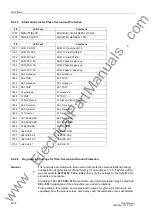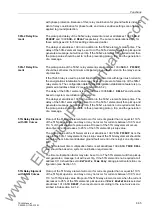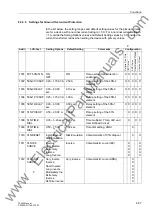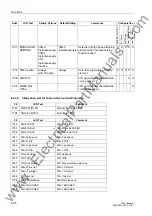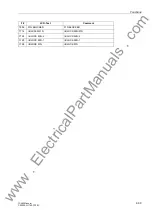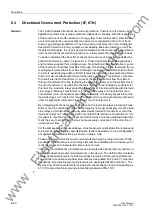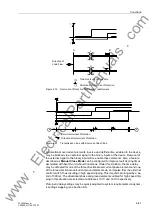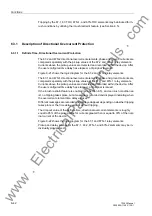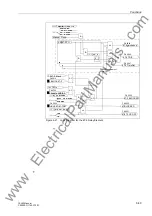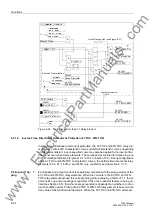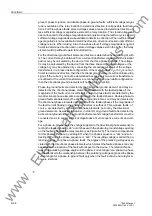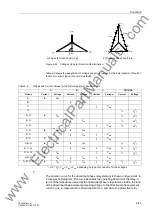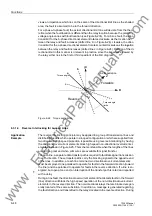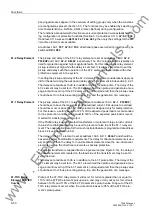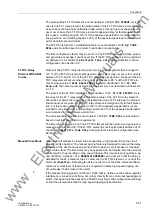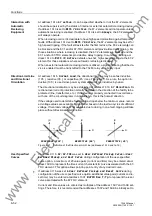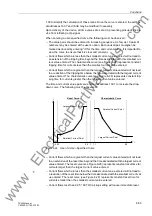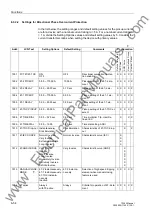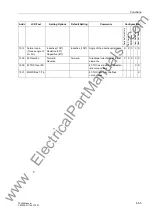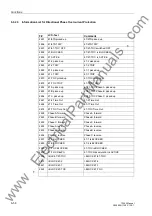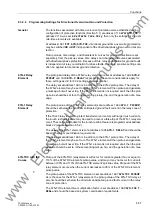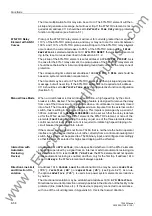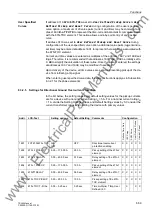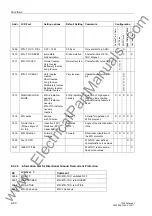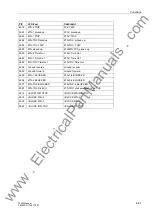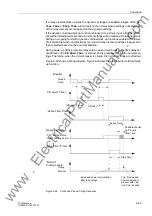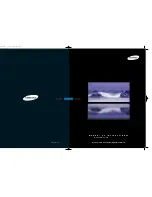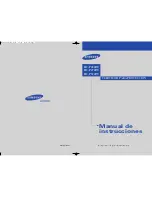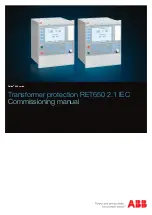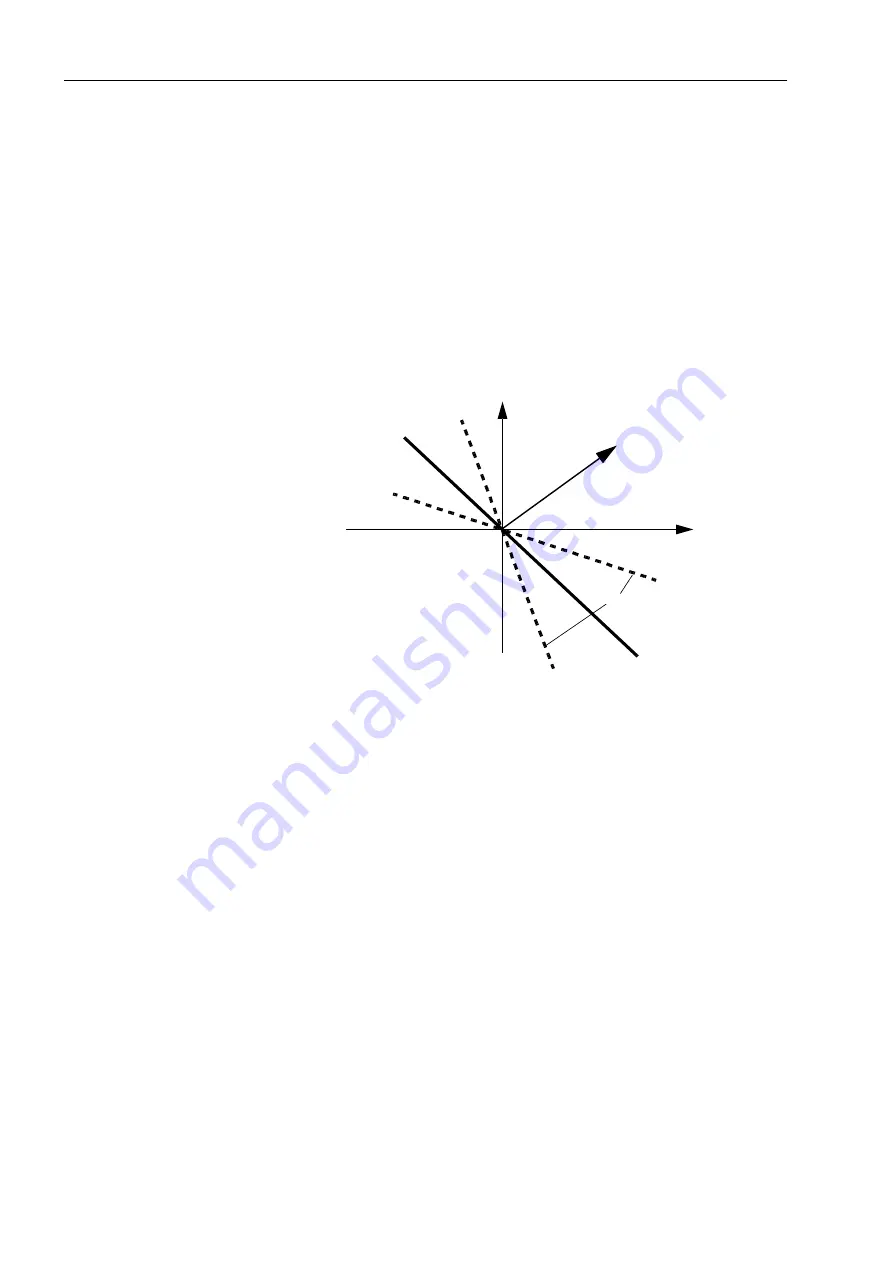
Functions
6-48
7SJ63 Manual
C53000-G1140-C120-1
views an impedance which lies on the same of the directional limit line as the shaded
area, the fault is assumed to be in the forward direction.
For a phase-to-phase fault, the actual directional limit line will deviate from the theo-
retical when the fault location is different than the relay location because the polarizing
voltage angle varies with fault location (see Figure 6-23b). For a b-to-c fault, the direc-
tional limit for the b-phase directional element rotates clockwise as the location be-
tween the relay and fault increases (dotted line ‘b’ in Figure 6-24). Likewise, the direc-
tional limit for the c-phase directional element rotates counterclockwise as the location
between the relay and fault increases (dotted line c in Figure 6-24). Rotation of the di-
rectional limit in this manner is irrelevant in practice, since the impedance viewed by
the relay either lies in the first or third quadrant of the R-X diagram.
Figure 6-24
Torque angle limits
6.3.1.4
Reverse Interlocking for Looped Lines
Application
Example
The reverse interlocking principle may be applied to a group of transmission lines and
distribution feeders which operate in a looped configuration or which are supplied from
two directions. High speed protection is possible using reverse interlocking by having
the directional overcurrent elements block high speed non-directional overcurrent el-
ements as shown in Figure 6-25. This scheme is feasible when the lengths of the lines
are not too great and when pilot wires are available for signal transfer.
For each line, a separate data transfer path is required to facilitate signal transmission
in each direction. These transfer paths carry the blocking signals to the opposite end
of the lines. In addition, at each line terminal, two directional overcurrent elements
must be employed, one polarized to operate for faults in the forward direction (toward
the line) and one polarized to operate for faults in the reverse direction. If a line is en-
ergized, but open at one end, an interruption of the transfer path is noted and reported
with a delay.
During a line fault, the directional overcurrent element that detects faults in the forward
(line) direction will block the high speed operation of the non-directional overcurrent
elements in the reverse direction. The non-directional relays that are blocked are gen-
erally located at the same substation. In addition, a message is generated regarding
the fault direction and transmitted to the relays located in the reverse direction. During
a
b
c
Reverse
Forwards
Line Impedance
Z
Torque angle
limits
Torque angle
R
jX
www
. ElectricalPartManuals
. com
Содержание siprotec 7SJ63
Страница 16: ...xiv 7SJ63 Instruction Manual C53000 G1140 C120 1 w w w E l e c t r i c a l P a r t M a n u a l s c o m ...
Страница 28: ...Introduction 1 12 7SJ63 Manual C53000 G1140 C120 1 w w w E l e c t r i c a l P a r t M a n u a l s c o m ...
Страница 112: ...SIPROTEC 4 Devices 4 38 7SJ63 Manual C53000 G1140 C120 1 w w w E l e c t r i c a l P a r t M a n u a l s c o m ...
Страница 346: ...Functions 6 182 7SJ63 Manual C53000 G1140 C120 1 w w w E l e c t r i c a l P a r t M a n u a l s c o m ...
Страница 494: ...Technical Data 10 48 7SJ63 Manual C53000 G1140 C120 1 w w w E l e c t r i c a l P a r t M a n u a l s c o m ...
Страница 604: ...Index Index 6 7SJ63 Instruction Manual C53000 G1140 C120 1 w w w E l e c t r i c a l P a r t M a n u a l s c o m ...

